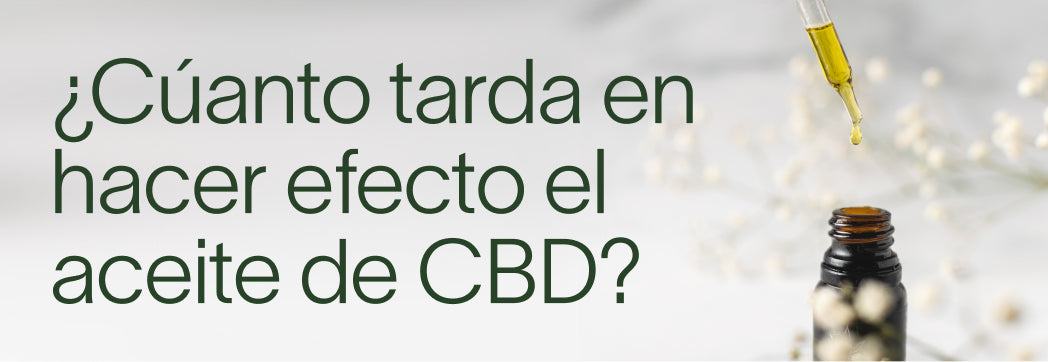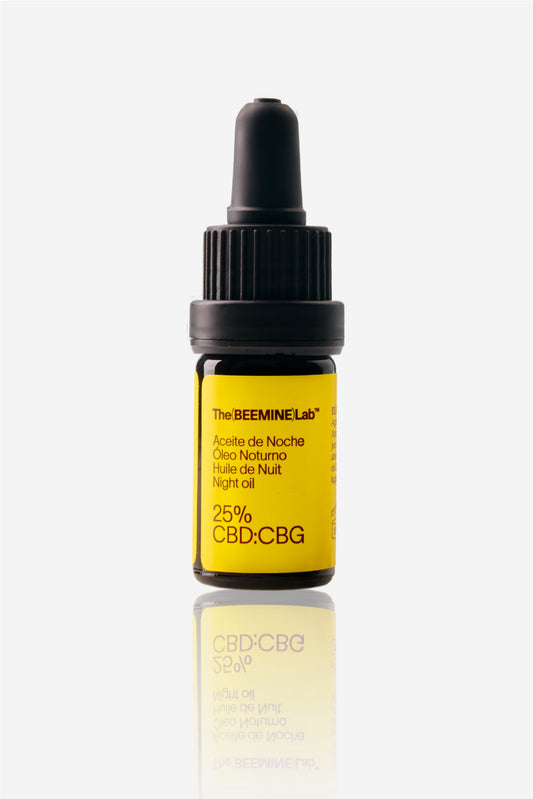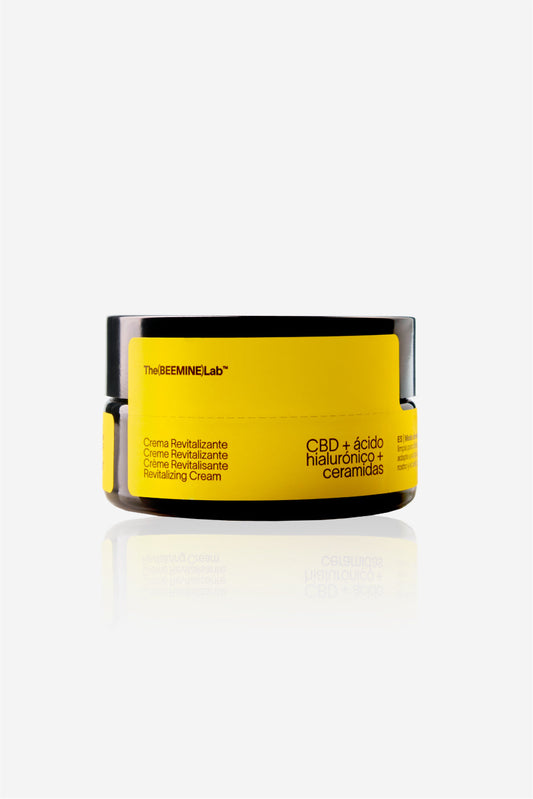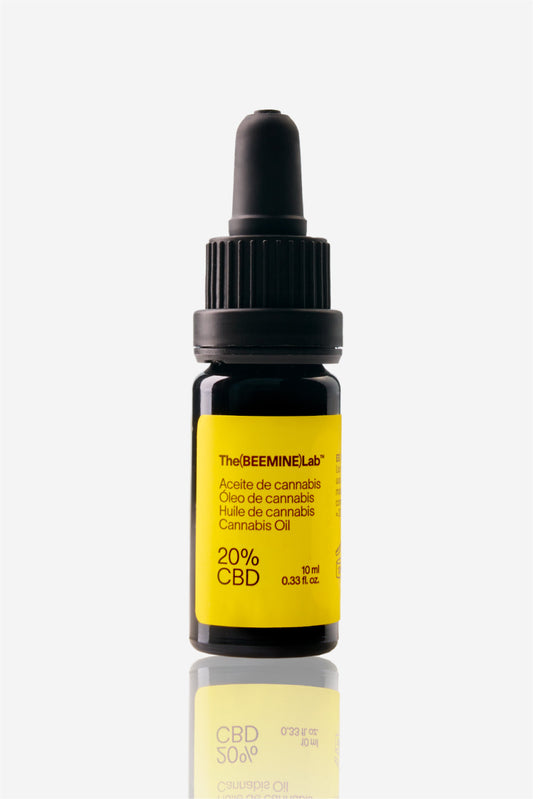Absorption of CBD Oil
CBD oil can be applied internally, through the lungs, sublingually or ingested, obtaining a systemic effect, that is, generalized and distributed throughout the body. However, through the external route the effect is concentrated in the area of application without generating systemic effects , unless the transdermal route is used, through which the substance enters the blood and the effect is generalized to the entire body.Legality of CBD Oil Absorption Uses
Depending on the regulations present in each country , there are products that can be used completely legally and others that remain in a legal limbo , since their use is not regulated but they are marketed under other types of registration. In general, in Europe, external use is regulated and cosmetic products containing CBD can be marketed only in its isolated or synthetic form, although there are countries that allow the production and distribution of cosmetic products containing broad-spectrum CBD extracts , that is, maintaining the presence of other components and phytocannabinoids, including THC (at a concentration of less than 0.2%). However, internal use has different nuances:- Inhalation of flowers is not regulated , although it is widely used, as CBD flowers are allowed to be marketed as collectible products.
- The sublingual and ingestible route is not regulated in Spain , however the WHO has declared CBD a completely safe substance and suitable for human consumption, as can be seen in North and South American countries where its use is permitted, as well as in other EU countries. In addition, in Spain it is possible to find CBD products for ingestion in a pharmacological setting, therefore its safety is more than declared, although its use is still not permitted.
CBD by inhalation: rapid onset effects
Through inhalation, the effect appears immediately , reaches its maximum potency after a few minutes (2 to 5) and gradually decreases until it disappears after about 2-3 hours. Therefore, it represents the best option to obtain the effect more quickly , although it does not guarantee a long duration. In the therapeutic field, inhalation is used as a form of rescue, since CBD can be administered at the necessary time and in the appropriate quantities for each situation. Opting for vaporization allows for increased bioavailability (which would be the absorption capacity) of up to 50%, compared to 30% for the smoked form, which also involves the production of carcinogenic substances. (4-5)CBD sublingual (CBD oil under the tongue): moderate onset effects
Through the sublingual route, the effect does not appear immediately , but usually begins after 20-30 minutes and remains stable for about 6 hours, before gradually disappearing. Taking CBD oil sublingually is the best way to ensure a stable and long-lasting effect , representing in the therapeutic field the best way to take CBD consistently and obtain a continuous effect. Being absorbed by the sublingual mucosa, CBD enters the blood without passing through the digestive system, so bioavailability can reach up to 40% and a possible pharmacological interaction is avoided. (3-6)
CBD Edibles (Gummies and Capsules): Slow Onset Effects
Through ingestion, CBD enters the digestive system, so the effect may take between 1 and 3 hours to appear , depending on each person's metabolism, the type of product consumed and the food ingested previously or subsequently. The duration of the effect is long and can reach up to 8 hours, although it is unstable, with ups and downs. CBD is absorbed by the digestive system through the liver, where interactions with drugs (which are absorbed through the same channel) could occur , so the ingested route is the least recommended at a medicinal level. In addition, due to the transformations of the digestive juices, bioavailability drops to 5-10%. (7)CBD Topicals: Quick Onset Localized Effects
As mentioned above, through the topical route the effect of CBD oil is not systemic, but rather is concentrated in the superficial area of the application area. The skin has a limited absorption capacity, so cosmetics usually have a low concentration and depending on the type of product (oil, ointment or cream) and the components that accompany the CBD (essential oils and other ingredients), the effect may take about 15-20 minutes to appear and last about 2-3 hours. The external route represents a completely safe way of using CBD oil , although its properties cannot be taken advantage of at a systemic level. At a medicinal level, it represents a good complementary treatment to reinforce and concentrate the effect in a specific area. (8-9)Time of onset of CBD effects under specific conditions
In each situation, it is possible to choose different tools, being able to combine different forms of use to optimize a therapeutic effect for both acute and chronic symptoms.How long does it take for CBD oil to work for joint pain?
In the case of suffering from joint pain, it is possible to act on the acute symptoms immediately, especially through inhaled and topical use , while it is necessary to carry out a more continuous treatment for a few weeks integrating the sublingual and topical route in order to observe more stable improvements that can be maintained even when the effect of CBD wears off. (10-11-12)How long does it take for CBD oil to work for chronic and neuropathic pain?
In the case of more chronic or neuropathic pain, it is necessary to opt for the sublingual route on an ongoing basis to obtain stable improvements , although through inhalation it is possible to obtain relief from acute pain peaks. It may take a few weeks to see significant improvements, although the relaxing effects can be noticed from the first few days.How long does it take for CBD oil to work for sleep?
Depending on each person's situation and the reasons that may cause sleep problems, different options can be chosen:- People who have difficulty falling asleep will get the best effect using the inhaled route , and the dosage can be adjusted according to need.
- For people who have problems with insomnia, light and poor sleep, or nighttime awakenings , the best option is to use the sublingual route . The relaxing effects of CBD can be appreciated in the first days of treatment, while for more serious or long-standing problems, a longer period of time such as weeks or months will be needed.
How long does it take for CBD oil to work for anxiety?
An anxiety crisis and a panic attack can appear punctually and quickly, so the fastest route available is needed, represented by inhalation. However, an acute crisis may be caused by a more chronic and generalized state of anxiety, so the sublingual route would represent the best option to obtain a reduction in the intensity and/or frequency of future acute crises and promote a general improvement in mood after a few weeks. (14)Time to onset of effects of CBD extracts
How long does it take for CBD oil to work against skin irritation?
There are oils that contain only CBD in its purified and isolated form , while others are made with a high concentration CBD extract that also maintains the presence of other phytocannabinoids and terpenes, called full spectrum oils for this reason. The effect of CBD is favored by the presence of the other compounds , so it will manifest itself more effectively in full spectrum products, while with products that use CBD in its pure form the effect will be less potent or it will be necessary to use a higher dosage (or both). (17) For this reason, there are also so-called broad spectrum oils in which CBD is accompanied by terpenes and other phytocannabinoids to the complete exclusion of THC, of which there is no trace. Literature:
1 - https://www.emcdda.europa.eu/news/2020/cannabidiol-cbd-is-not-considered-a-narcotic-drug-under-european-law_en
2 - Cannabis-based medicines–GW pharmaceuticals: high CBD, high THC, medicinal cannabis–GW pharmaceuticals, THC:CBD. (2003). Drugs in R&D, 4(5), 306–309.
3 - Hosseini, A., McLachlan, A.J., & Lickliter, J.D. (2021). A phase I trial of the safety, tolerability and pharmacokinetics of cannabidiol administered as single-dose oil solution and single and multiple doses of a sublingual wafer in healthy volunteers. British journal of clinical pharmacology, 87(4), 2070–2077.
4 - McGilveray IJ (2005). Pharmacokinetics of cannabinoids. Pain research & management, 10 Suppl A, 15A–22A
5 - Lanz, C., Mattsson, J., Soydaner, U., & Brenneisen, R. (2016). Medicinal Cannabis: In Vitro Validation of Vaporizers for the Smoke-Free Inhalation of Cannabis. PloS one, 11(1)
6 - Narang, NC, Sharma, J., & Baba, S. (2011). SUBLINGUAL MUCOSA AS A ROUTE FOR SYSTEMIC DRUG DELIVERY
7 - Chayasirisobhon S. (2020). Mechanisms of Action and Pharmacokinetics of Cannabis. The Permanent journal, 25, 1–3
8 - Kupczyk, P., Reich, A., & Szepietowski, JC (2009). Cannabinoid system in the skin – a possible target for future therapies in dermatology. Experimental dermatology , 18 (8), 669–679
9 - Eagleston, L., Kalani, NK, Patel, RR, Flaten, HK, Dunnick, CA, & Dellavalle, RP (2018). Cannabinoids in dermatology: a scoping review. Dermatology online journal , 24 (6), 13030/qt7pn8c0saswan, SM, Klosner, AE, Glynn, K., Rajgopal, A., Malik, K., Yim, S., & Stern, N. (2020). Therapeutic Potential of Cannabidiol (CBD) for Skin Health and Disorders. Clinical, cosmetic and investigative dermatology , 13 , 927–942
10 - Mlost, J., Bryk, M., & Starowicz, K. (2020). Cannabidiol for Pain Treatment: Focus on Pharmacology and Mechanism of Action. International journal of molecular sciences , 21 (22), 8870. https://doi.org/10.3390/ijms21228870
11 - Urits, I., Gress, K., Charipova, K., Habib, K., Lee, D., Lee, C., Jung, J.W., Kassem, H., Cornett, E., Paladini, A. , Varrassi, G., Kaye, A.D., & Viswanath, O. (2020). Use of cannabidiol (CBD) for the treatment of chronic pain. Best practice & research. Clinical anesthesiology , 34 (3), 463–477. https://doi.org/10.1016/j.bpa.2020.06.004
12 - Verrico, CD, Wesson, S., Konduri, V., Hofferek, CJ, Vazquez-Perez, J., Blair, E., Dunner, K., Jr, Salimpour, P., Decker, WK, & Halpert , M. M. (2020). A randomized, double-blind, placebo-controlled study of daily cannabidiol for the treatment of canine osteoarthritis pain. Pain , 161 (9), 2191–2202. https://doi.org/10.1097/j.pain.0000000000001896
13 - Babson, KA, Sottile, J., & Morabito, D. (2017). Cannabis, Cannabinoids, and Sleep: a Review of the Literature. Current psychiatry reports , 19 (4), 23. https://doi.org/10.1007/s11920-017-0775-9
14 - Shannon, S., Lewis, N., Lee, H., & Hughes, S. (2019). Cannabidiol in Anxiety and Sleep: A Large Case Series. The Permanent journal , 23 , 18–041. https://doi.org/10.7812/TPP/18-041
15 - Sangiovanni, E., Fumagalli, M., Pacchetti, B., Piazza, S., Magnavacca, A., Khalilpour, S., Melzi, G., Martinelli, G., & Dell'Agli, M. ( 2019). Cannabis sativa L. extract and cannabidiol inhibit in vitro mediators of skin inflammation and wound injury. Phytotherapy research : PTR , 33 (8), 2083–2093. https://doi.org/10.1002/ptr.6400
16 - Palmieri, B., Laurino, C., & Vadalà, M. (2019). A therapeutic effect of cbd-enriched ointment in inflammatory skin diseases and cutaneous scars. Therapeutic Clinic , 170 (2), e93–e99. https://doi.org/10.7417/CT.2019.2116
Literature:
1 - https://www.emcdda.europa.eu/news/2020/cannabidiol-cbd-is-not-considered-a-narcotic-drug-under-european-law_en
2 - Cannabis-based medicines–GW pharmaceuticals: high CBD, high THC, medicinal cannabis–GW pharmaceuticals, THC:CBD. (2003). Drugs in R&D, 4(5), 306–309.
3 - Hosseini, A., McLachlan, A.J., & Lickliter, J.D. (2021). A phase I trial of the safety, tolerability and pharmacokinetics of cannabidiol administered as single-dose oil solution and single and multiple doses of a sublingual wafer in healthy volunteers. British journal of clinical pharmacology, 87(4), 2070–2077.
4 - McGilveray IJ (2005). Pharmacokinetics of cannabinoids. Pain research & management, 10 Suppl A, 15A–22A
5 - Lanz, C., Mattsson, J., Soydaner, U., & Brenneisen, R. (2016). Medicinal Cannabis: In Vitro Validation of Vaporizers for the Smoke-Free Inhalation of Cannabis. PloS one, 11(1)
6 - Narang, NC, Sharma, J., & Baba, S. (2011). SUBLINGUAL MUCOSA AS A ROUTE FOR SYSTEMIC DRUG DELIVERY
7 - Chayasirisobhon S. (2020). Mechanisms of Action and Pharmacokinetics of Cannabis. The Permanent journal, 25, 1–3
8 - Kupczyk, P., Reich, A., & Szepietowski, JC (2009). Cannabinoid system in the skin – a possible target for future therapies in dermatology. Experimental dermatology , 18 (8), 669–679
9 - Eagleston, L., Kalani, NK, Patel, RR, Flaten, HK, Dunnick, CA, & Dellavalle, RP (2018). Cannabinoids in dermatology: a scoping review. Dermatology online journal , 24 (6), 13030/qt7pn8c0saswan, SM, Klosner, AE, Glynn, K., Rajgopal, A., Malik, K., Yim, S., & Stern, N. (2020). Therapeutic Potential of Cannabidiol (CBD) for Skin Health and Disorders. Clinical, cosmetic and investigative dermatology , 13 , 927–942
10 - Mlost, J., Bryk, M., & Starowicz, K. (2020). Cannabidiol for Pain Treatment: Focus on Pharmacology and Mechanism of Action. International journal of molecular sciences , 21 (22), 8870. https://doi.org/10.3390/ijms21228870
11 - Urits, I., Gress, K., Charipova, K., Habib, K., Lee, D., Lee, C., Jung, J.W., Kassem, H., Cornett, E., Paladini, A. , Varrassi, G., Kaye, A.D., & Viswanath, O. (2020). Use of cannabidiol (CBD) for the treatment of chronic pain. Best practice & research. Clinical anesthesiology , 34 (3), 463–477. https://doi.org/10.1016/j.bpa.2020.06.004
12 - Verrico, CD, Wesson, S., Konduri, V., Hofferek, CJ, Vazquez-Perez, J., Blair, E., Dunner, K., Jr, Salimpour, P., Decker, WK, & Halpert , M. M. (2020). A randomized, double-blind, placebo-controlled study of daily cannabidiol for the treatment of canine osteoarthritis pain. Pain , 161 (9), 2191–2202. https://doi.org/10.1097/j.pain.0000000000001896
13 - Babson, KA, Sottile, J., & Morabito, D. (2017). Cannabis, Cannabinoids, and Sleep: a Review of the Literature. Current psychiatry reports , 19 (4), 23. https://doi.org/10.1007/s11920-017-0775-9
14 - Shannon, S., Lewis, N., Lee, H., & Hughes, S. (2019). Cannabidiol in Anxiety and Sleep: A Large Case Series. The Permanent journal , 23 , 18–041. https://doi.org/10.7812/TPP/18-041
15 - Sangiovanni, E., Fumagalli, M., Pacchetti, B., Piazza, S., Magnavacca, A., Khalilpour, S., Melzi, G., Martinelli, G., & Dell'Agli, M. ( 2019). Cannabis sativa L. extract and cannabidiol inhibit in vitro mediators of skin inflammation and wound injury. Phytotherapy research : PTR , 33 (8), 2083–2093. https://doi.org/10.1002/ptr.6400
16 - Palmieri, B., Laurino, C., & Vadalà, M. (2019). A therapeutic effect of cbd-enriched ointment in inflammatory skin diseases and cutaneous scars. Therapeutic Clinic , 170 (2), e93–e99. https://doi.org/10.7417/CT.2019.2116






